2024 NFL Free Agents Teams Will Regret Spending Big Money On
2024 NFL Free Agents Teams Will Regret Spending Big Money On
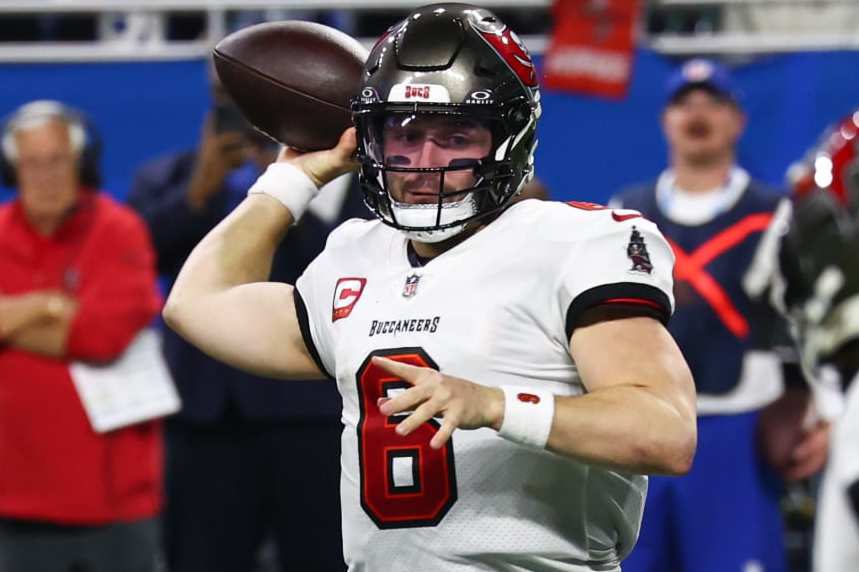
The NFL tampering period for the new league year is less than three weeks away, with buyer-beware stickers needed to apply toward free agency.
Think back to a year ago when the top signings had everyone excited, and we saw only marginal movement and less production than expected.
Top quarterbacks Lamar Jackson and Geno Smith stayed with their respective teams.
Derek Carr signed last offseason's most lucrative deal to switch teams, and the New Orleans Saints already have concerns whether he's the answer. Jimmy Garoppolo is basically already out as the Las Vegas Raiders' quarterback. Right tackle Mike McGlinchey struggled, particularly early in his first season with the Denver Broncos. Jawaan Taylor became the poster boy for penalties as the Kansas City Chiefs' new right tackle. Javon Hargrave saw his production slip slightly after signing a four-year, $84 million contract to join the San Francisco 49ers.
Those five players agreed to the biggest deals in total contractual value last spring.
Generally speaking, free agency is a series of overpays as organizations take shortcuts to improve in specific areas. Almost every NFL general manager will say publicly that isn't the way to build a roster. Drafting and developing is, with free agency serving as a complementary tool.
Even so, certain teams will continue to make big splashes with their signings in hopes that the deals will provide exactly what they lack to make a push toward a championship.
Among the 2024 class, eight specific targets are set to receive significant deals that organizations may later regret.
QB Baker Mayfield
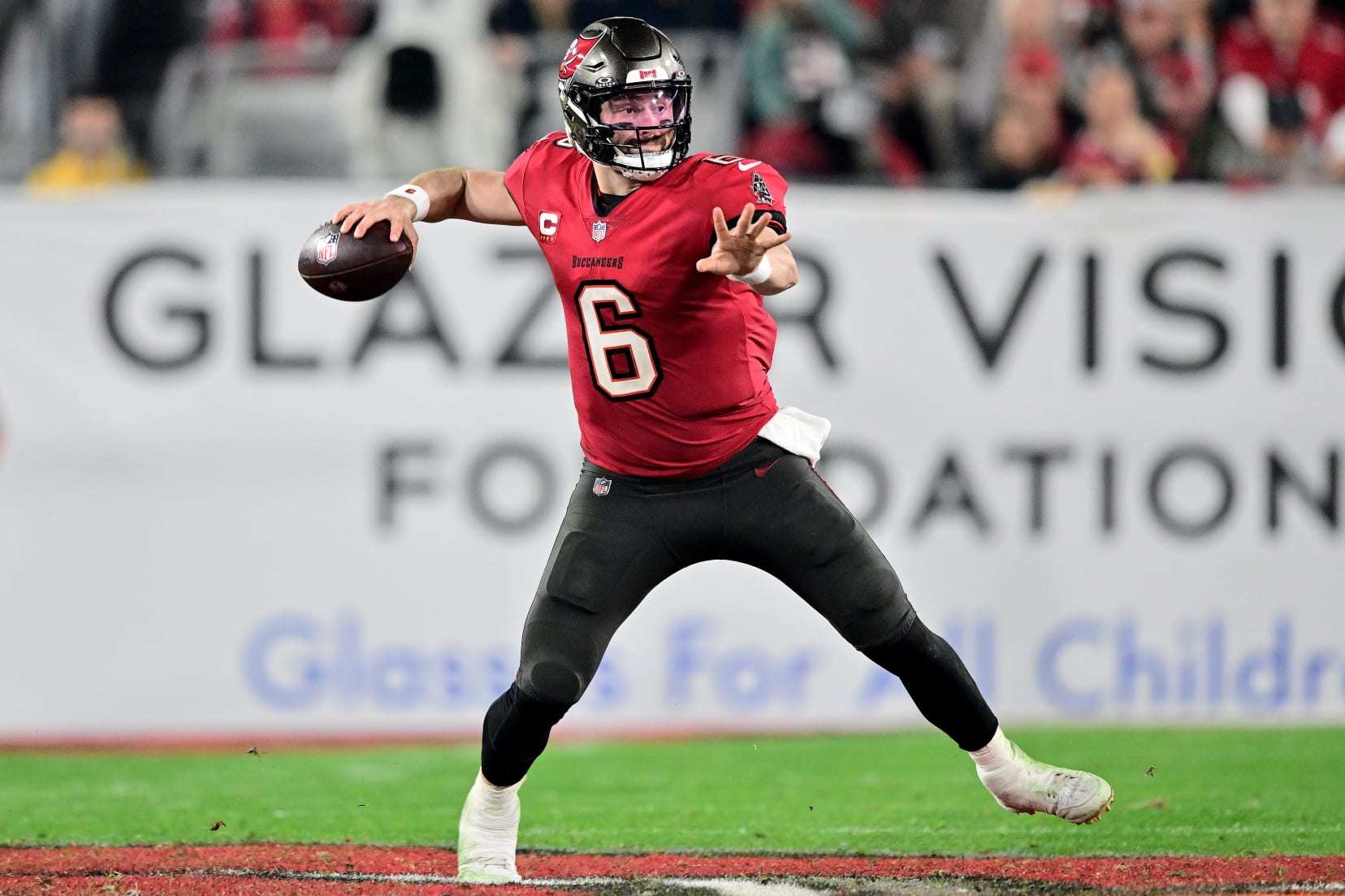
Baker Mayfield may have finally found a home with the Tampa Bay Buccaneers, but it won't be decorated exactly the same way next season.
Other quarterback-needy franchises should consider the possibility of signing the 2018 No. 1 overall pick after he revived his career in Tampa.
But the Buccaneers are the front-runners to retain his services after they rebuilt him into a legitimate starter again.
After being dumped by the Cleveland Browns in favor of Deshaun Watson, Mayfield didn't last a full season with the Carolina Panthers. He showed some flashes later in the year with the Los Angeles Rams, but the quarterback conceded he wasn't himself.
"There were definitely times I lost confidence," Mayfield told NBC pregame prior to the Buccaneers' playoff meeting with the Detroit Lions.
When asked about his time in Tampa, he said: "Definitely most comfortable that I've ever been."
Whether it's his most recent stop or somewhere else, the 28-year-old is no longer viewed as a reclamation project. He's now an established starter, but that comes with an asterisk.
Mayfield is coming off a career-year by setting new highs in completions, passing attempts, completion percentage, passing yardage and passing touchdowns. He earned his first big payday.
However, consistency, both individually and situationally, has always plagued him. Former Buccaneers offensive coordinator-turned-Carolina Panthers head coach Dave Canales deserves significant credit for his offensive structure and allowing his last quarterback to build the comfort level Mayfield mentioned.
But the fifth-year starter will be paired with yet another new play-caller, whether he stays or leaves the Bucs. He has had a new offensive coordinator every year of his career.
The level of consistency found within winning organizations and how it helps in the development of the quarterback position can't be overstated. Mayfield's career is defined by upheaval. There's no guarantee this past year won't be a one-hit wonder when placed in another offense.
At least in Tampa Bay, the Buccaneers have brought in a new coordinator familiar to Mayfield in Liam Coen, who was with the Los Angeles Rams when the Oklahoma product played there, though Sean McVay serves as the actual play-caller. Furthermore, the Bucs could lose top target Mike Evans in free agency.
Even if Tampa Bay retains Mayfield, he's likely not going to significantly improve over what was most recently seen, where he still falls short of being counted among the league's top-tier quarterbacks despite a hefty new contract.
WR Tee Higgins
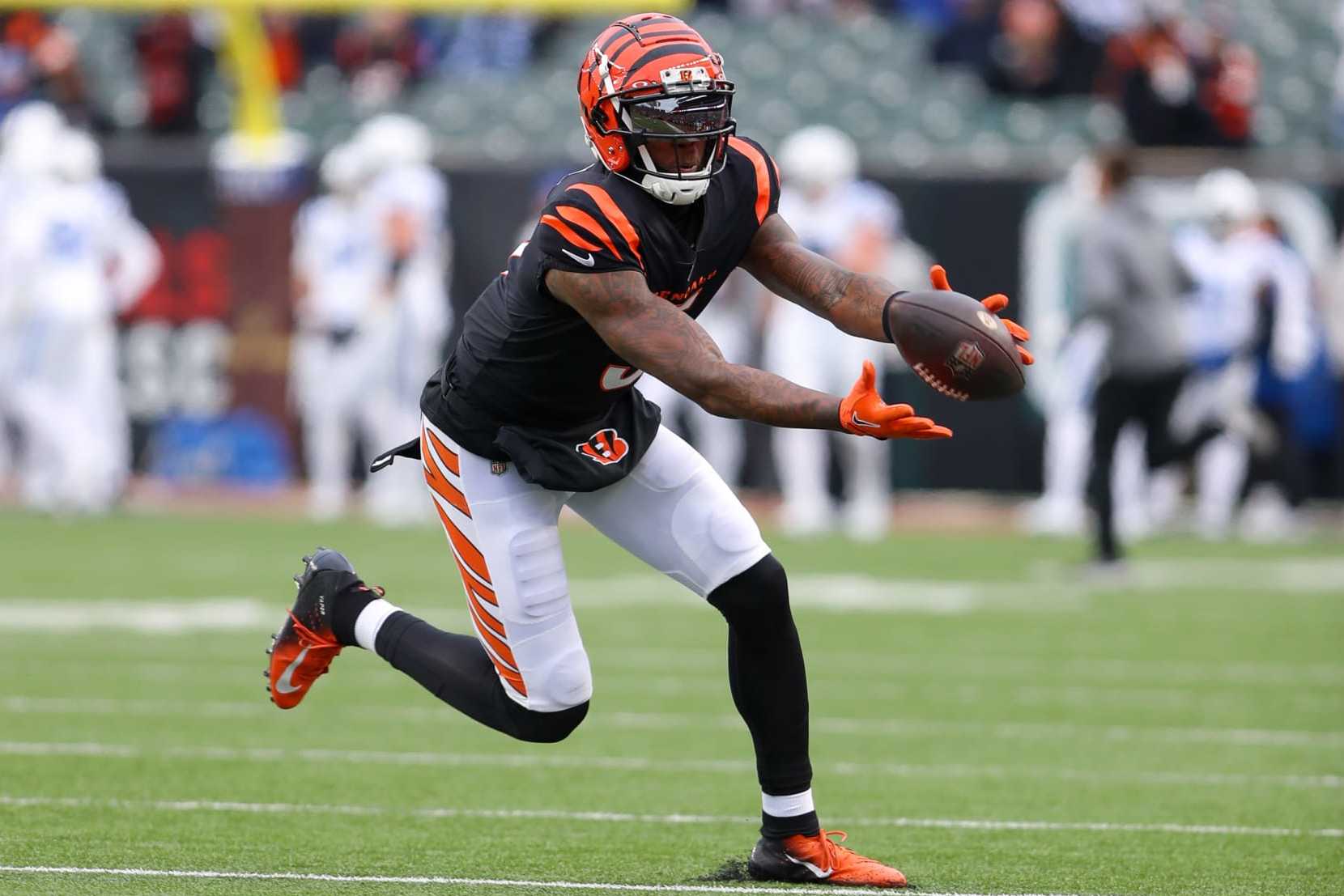
Tee Higgins is a talented wide receiver, and he's going to be paid to become a franchise's WR1. Expectations will come with that designation, and they may be difficult to meet.
The wide receiver market has changed during the previous two offseasons. Beginning in 2022, 11 different receivers signed new deals with an average annual salary of $20 million or more.
The Cincinnati Bengals could place the franchise tag on Higgins for this upcoming season. Otherwise, the organization's focal point will be to eventually sign Ja'Marr Chase to what will likely be a market-topping contract extension.
And Higgins will have an opportunity to go elsewhere and become "the guy" in that passing game.
If it happens this offseason, the 25-year-old will do so while coming off his weakest statistical year. Due to lingering hamstring issues that caused him to miss five regular-season contests, he posted career lows with 42 receptions for 656 yards and five touchdowns.
Soft-tissue injuries can be tricky, though they're not typically viewed as long-term problems. However, Higgins isn't coming off the strongest season when entering the market. Furthermore, he's never been in a position where he's the primary threat.
The Clemson product did manage 100 or more targets in his first three seasons, but Tyler Boyd and Chase were the more established options during those campaigns. With another squad, Higgins' next contract will demand he's the top option, with defenses defending him in such a manner.
Also, there's the matter of drops. Higgins ranks among the top five-ish receivers in drops over the last two seasons, which accounts for 8.1 percent drop rate. Granted, highly targeted options tend to drop more based purely on opportunities. But his rate is higher than everyone else among the top five, bar Romeo Doubs.
Higgins' price will only grow if the Bengals do franchise-tag him with the intention of trading him to another team. Furthermore, he'll be leaving Joe Burrow.
Higgins' target share rate will increase, but the likelihood of him downgrading at quarterback is a real possibility.
RB Derrick Henry
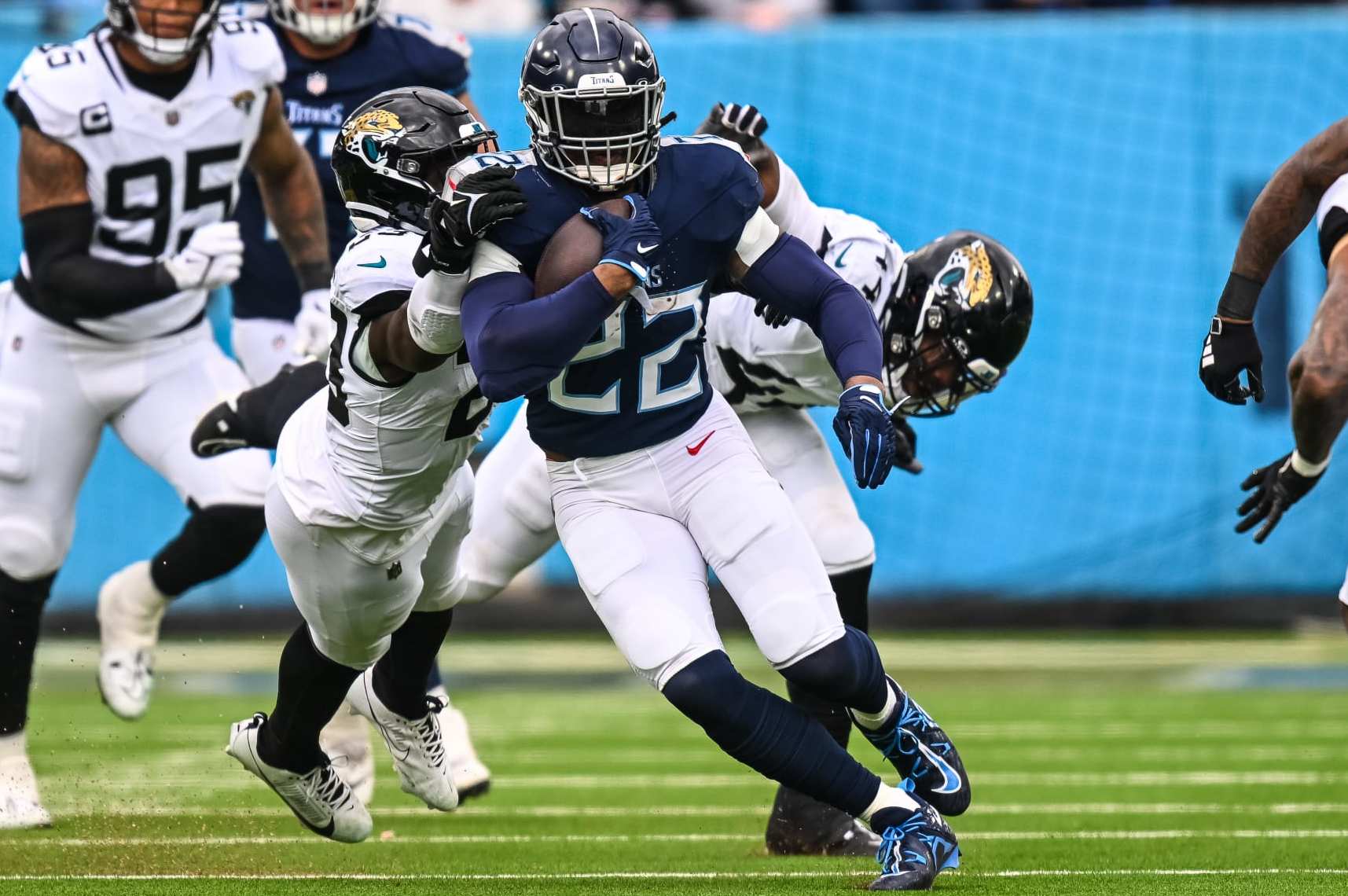
Free-agent contracts are meant to be based on what a player does next, not what he's already accomplished.
For someone like running back Derrick Henry, the majority of his career can be seen in the rearview mirror. His inevitable decline is forthcoming. Someone will still likely pay him based on reputation and standing as the most productive runner in today's game.
Henry turned 30 last month. Normally, it's the age when running backs don't have much of a market. Maybe he won't, but he does have something left in the tank.
There's not much of a recent track record for a running back of Henry's caliber hitting the market for the first time at what's considered an advanced age. Adrian Peterson did so at 32 before signing a one-year, $7 million deal with the New Orleans Saints.
Comparatively, Peterson was coming off an injured-plagued campaign the prior year. Whereas Henry played a full 17-game slate in 2023 and finished second overall with 1,167 rushing yards. As such, he'll have far more leverage to demand a more lucrative free-agent deal.
With that said, he's coming off a career-low with an average of 4.2 yards per carry. An argument can be made that he played behind the NFL's worst offensive line—which he did. At the same time, his explosive numbers were down as well. He's still a highly effective runner, who can create through contact. But a slight decline should be baked into contract negotiations.
Henry can help an offense in the short term. Anything longer than a one- or two-year deal will be too much, especially at the price he will likely demand since he remains among the league's best backs, even at a devalued position.
TE Dalton Schultz
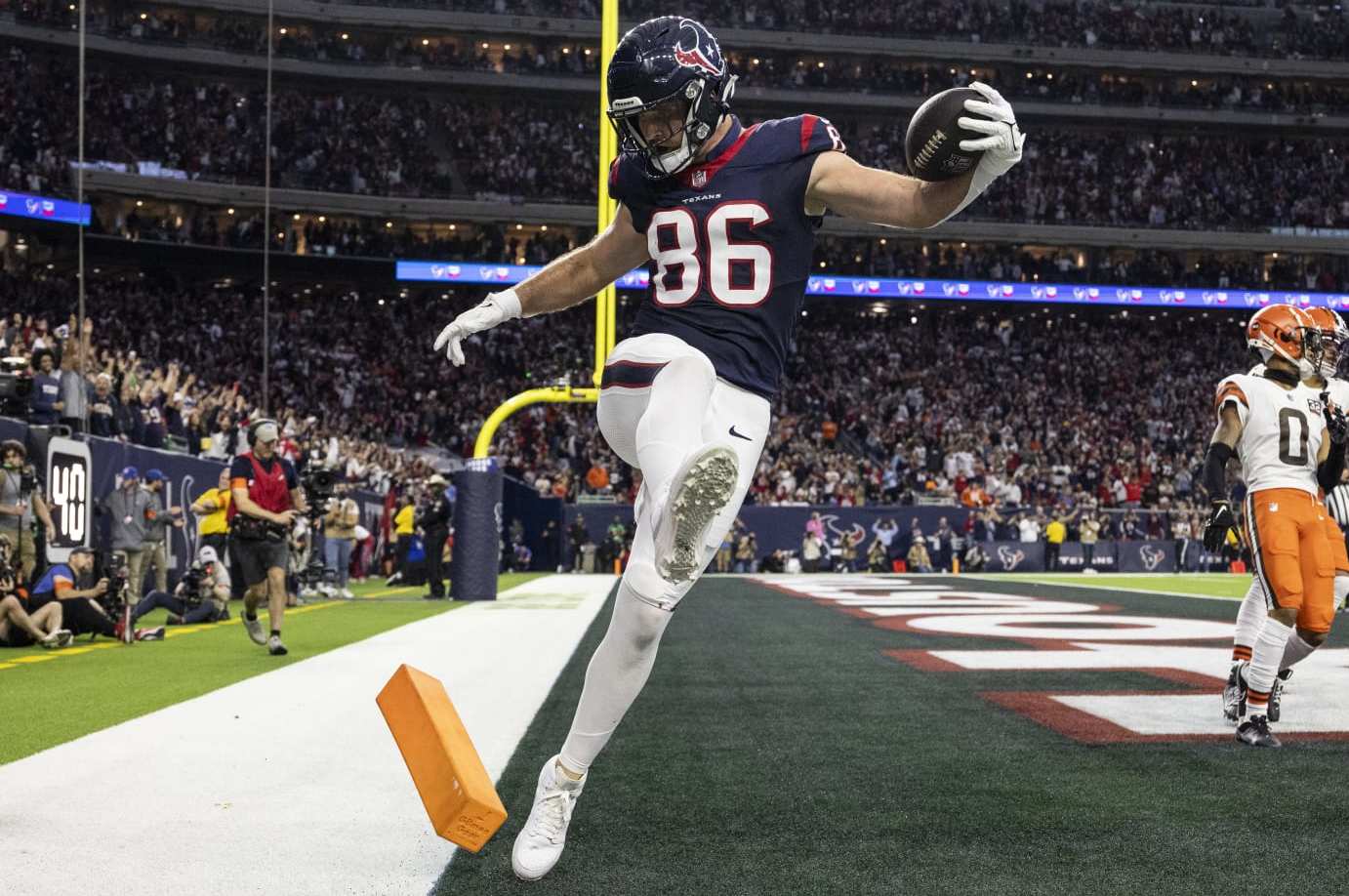
The best option among a bad class doesn't equate to a really good option. Dalton Schultz falls into this category when discussing the upcoming free-agent tight end crop.
To be fair, the 27-year-old is coming off another solid season, with 59 receptions for 635 yards and five touchdowns. During the previous three campaigns, he caught 198 passes for 2,000 yards and 17 touchdowns with the Cowboys. Yet he wasn't offered a long-term contract extension.
Schultz took advantage of the one-year, prove-it deal he accepted last offseason from the Houston Texans and provided rookie quarterback C.J. Stroud with a reliable target over the middle of the field.
Expectations of the Stanford product being anything more than what was just described, with accompanying free-agent deal, will be far removed from reality of who he is as a player.
The situation is similar to when Austin Hooper signed a four-year, $44 million free-agent contract to join the Cleveland Browns for the 2020 season after making two consecutive Pro Bowls with the Atlanta Falcons.
Schultz hasn't made any Pro Bowls, but the skill sets are similar. Hooper benefited from an offense that opened up the middle of the field and allowed him to pick apart soft spots in the zone to be a reliable threat over the middle of the field, but he didn't make it past his second year with the Browns before being released.
Neither Hooper nor Schultz are dynamic threats in the passing game. Teams shouldn't expect them to stretch the seam or create after the catch. They are who they are and should be paid accordingly.
In Schultz's case, he should benefit financially from a weak positional class. He can be a key cog within any offense. But he's not a difference-maker.
OT Trent Brown
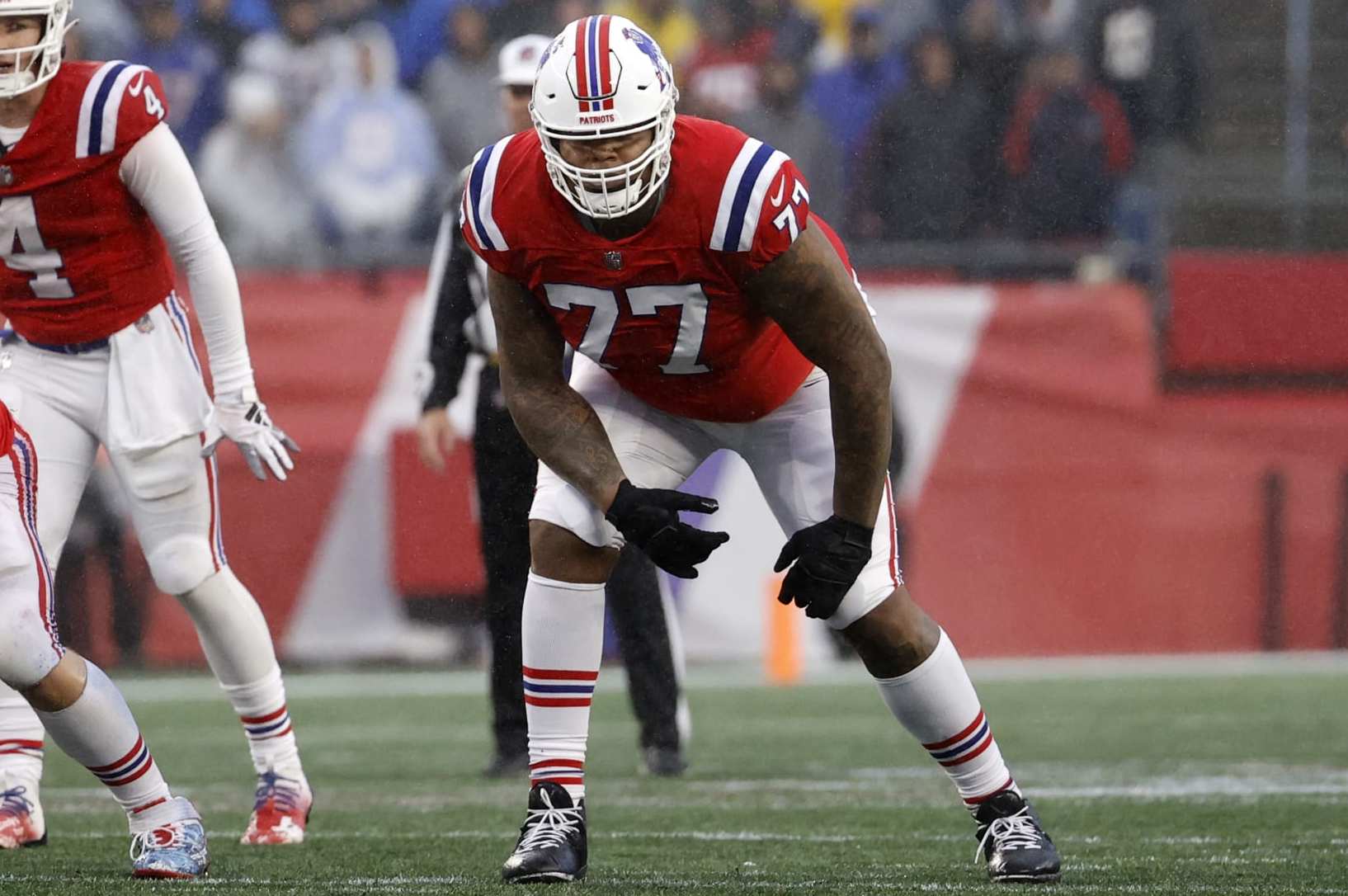
Supply will not meet demand once the tampering period begins as all of the NFL teams in desperate need of offensive line upgrades try to find some.
Once again, Trent Brown will hit the market at the right time.
Five years ago, the 30-year-old explored free agency and signed a four-year, $66 million contract to join the then-Oakland Raiders. Conditioning issues and missed games led to him (and a seventh-round draft pick) being traded back to the New England Patriots after two years with the Raiders for a fifth-round selection.
Since rejoining his old team, Brown has been steady, though he dealt with multiple injuries during the 2023 campaign. He'll turn 31 in April and hasn't been successful outside of the structure previously found under Bill Belichick and his staff.
Questions about Brown's weight and effort are always part of the conversation. He wasn't a particularly good pass-blocker last season, either. According to ESPN's Matt Bowen, the 6'8", 370-pound lineman posted a 82.7 percent pass-block win rate, which ranked 60th of the 69 qualifying offensive tackles.
Still, Brown can rely on his size and length to be effective while bringing in significant experience as a starting left or right tackle.
Former teammate Michael Onwenu should draw far more interest since he's only 26, but he may be viewed more as a guard depending on the suitor. Jonah Williams is also 26, but the Cincinnati Bengals wanted to upgrade at left tackle last offseason and bumped him to the right side. Eight-time Pro Bowler Tyron Smith is the best of the bunch, but he has a long injury history, turns 34 during the upcoming season and probably won't leave the Dallas Cowboys.
Some organization will take a leap of faith on Brown in hopes of securing one of its offensive tackle spots. It will be forced to do so because quality options are scarce and high-end offensive tackles in their prime don't hit the market very often.
Brown can at least provide competence, as long as he remains invested, but he'll cost a pretty penny just to reach a marginal level of performance.
C Tyler Biadasz
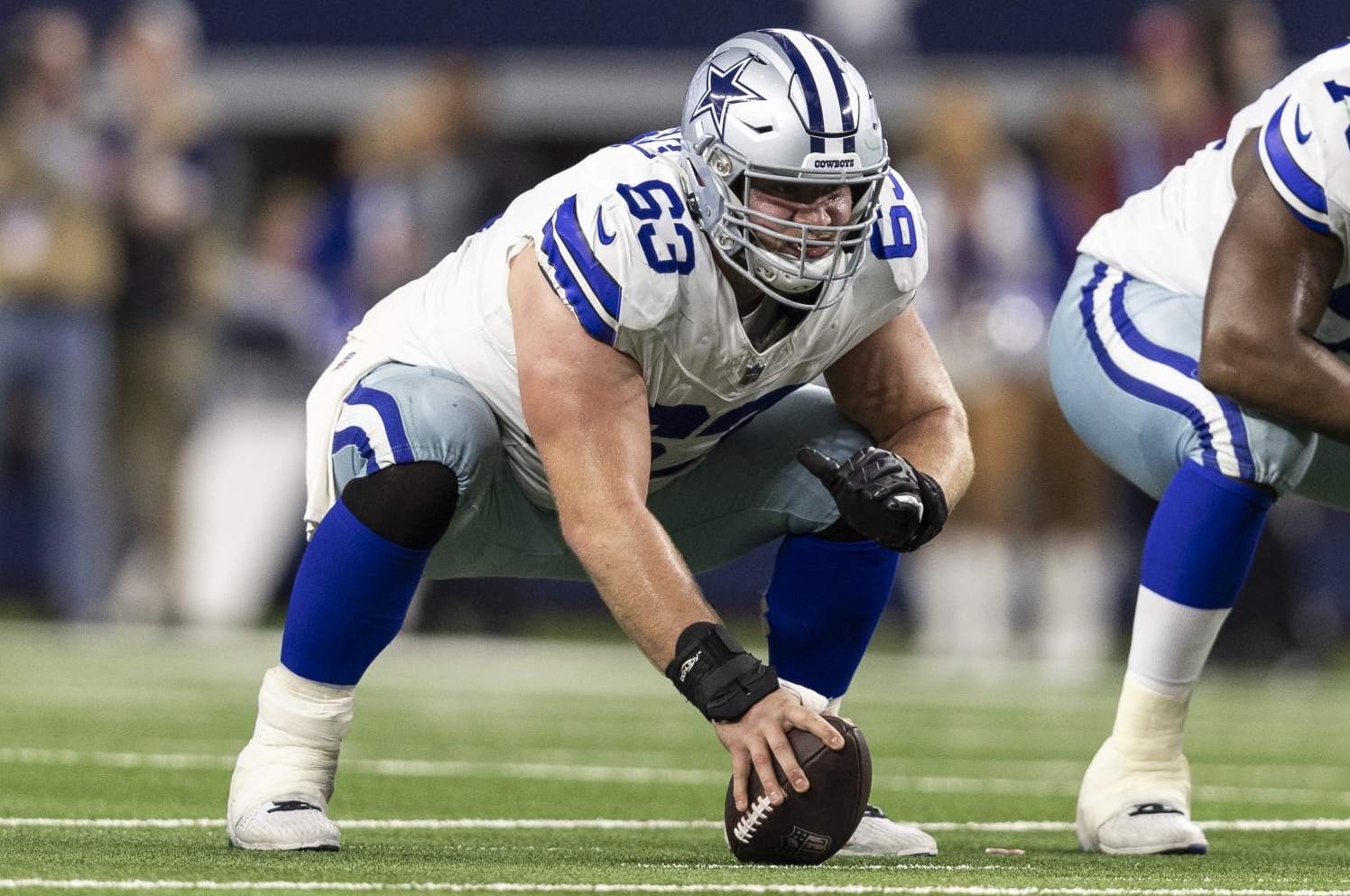
Tyler Biadasz has benefited greatly from playing between two ultra-talented guards over the last two seasons. The Dallas Cowboys feature three of the NFL's most gifted blockers in Tyron Smith, Tyler Smith and Zack Martin.
Some will view Biadasz as another top-notch product from a talented unit, without taking into account the Cowboys could well let him walk and potentially upgrade the position.
To be fair, the 26-year-old earned a starting role during his rookie season and has yet to be displaced. He's smart, experienced and proven, and he can step into any lineup and help. However, he shouldn't be viewed as an elite center despite his pedigree.
The 2022 Pro Bowler gets good fits and plays with excellent technique, but he lacks the functional playing strength to handle powerful nose tackles in the run game and tends to get walked back in pass protection.
Obviously, a give-and-take exists with what a team wants from its pivot and how a talent like Biadasz fits into the scheme.
Lesser-known centers, such as Andre James, Lloyd Cushenberry III and Coleman Shelton, could end up being shrewder investments. Connor Williams is the best available option, though he's coming off a torn ACL in Week 14 against the Tennessee Titans.
The most recognizable name isn't always the best target. Biadasz isn't a household name, per se, but his time with the Cowboys and their vaunted offensive line adds a little panache, particularly in a down offensive line market.
However, he's not the type of player many will expect based on where his free-agent value ultimately hits, which could easily be somewhere between $8-12 million annually.
DL Christian Wilkins
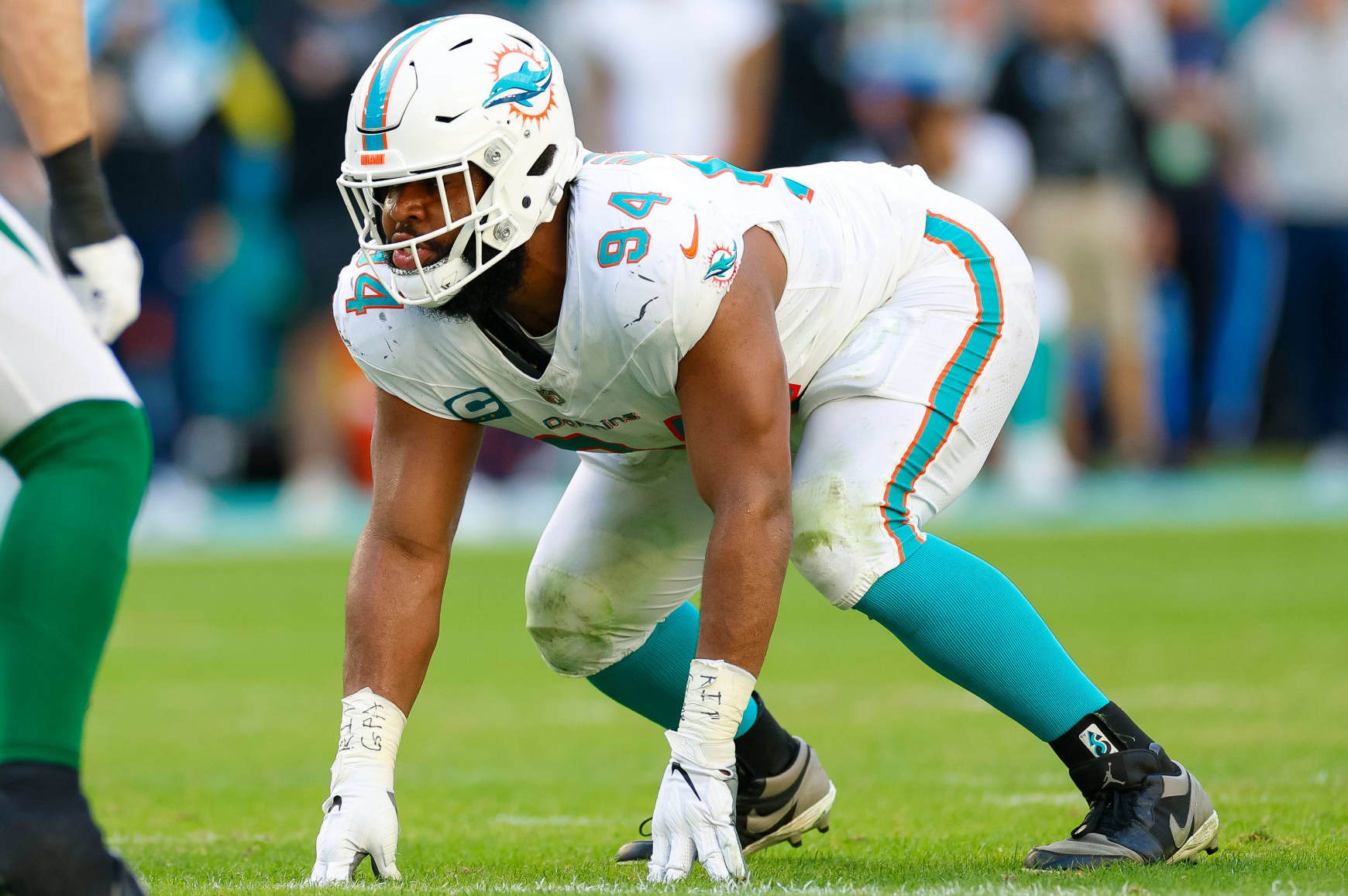
Skill sets often determine an individual's value when he hits the open market.
A great nose tackle at the point of attack is far less valuable today than a defensive lineman, who consistently collapses the pocket and pressures opposing quarterbacks.
What if the individual in question has a bit of both in his game? Christian Wilkins does. Though he's never quite put it all together.
In his first five NFL campaigns, the 2019 first-rounder has developed into one of the game's premier run defenders and regularly found himself among the league leaders in defensive stops. This past season, he blossomed into an excellent interior pass-rusher, with a career-high nine sacks and 23 more quarterback hits.
To understand the disparity between those two points, the 28-year-old accumulated a total of 11.5 sacks and 27 quarterback hits from his rookie season through Year 4.
The caveat is that he wasn't quite as good against the run as he had been. Which version shows up after signing a massive new contract? Clearly, teams hope last season's pass-rushing production isn't an aberration that occurred during a contract year. Yet, a potential huge deal should be for a complete player who serves as the spearhead for the entire defense.
Wilkins has never been that player. He's a very good one, to be sure. As a top free-agent signing, you're asked to be a true difference-maker. The question here is whether a team will get enough juice based on the amount of squeeze it'll need to enact.
When Chris Jones or a younger option in Justin Madubuike, who has a similar trajectory, are also in the same market, a certain standard will be set that Wilkins must achieve.
Edge Bryce Huff
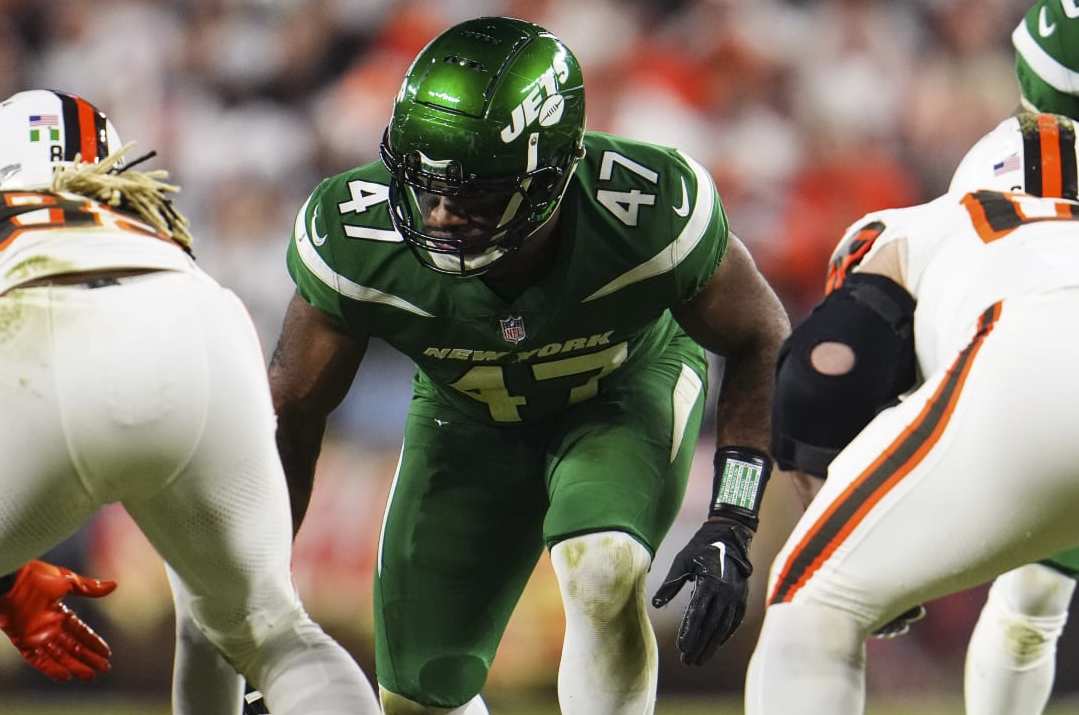
Bryce Huff is one of the game's best pure pass-rushers. He's lightning quick, flexible and tenacious, but he's never been an every-down defender at the professional level.
The 25-year-old has yet to reach 500 snaps in any given season. He played more last year than ever before and posted a career-high 10 sacks, with the eighth-ranked pass-rush win rate, per Bowen.
The former undrafted free agent knows what he has to prove to everyone around the league.
"I definitely want to be able [to] find a scheme that sees me as an every-down player," he told ESPN's Rich Cimini. "It gives me the opportunity to show that I can be a top-tier edge in this league in the run and in the pass."
These concerns have hounded Huff since before he entered the league. He wasn't drafted despite displaying the same qualities at Memphis, because he struggled against the run and lacked the prototypical physical tools to warrant a selection. He's a sub-6'2", 254-pound edge-defender, with arms shorter than 32 inches.
Yet his explosivity provides one elite trait that just happens to carry a hefty price tag on the open market.
Teams are always in search of pass-rushers in today's pass-dominated NFL. Huff will be highly sought-after once the tampering period begins, but teams will do so not fully knowing what they're going to get in return.
How the defender holds up when playing consistently will tell whether he was worth the type of contract he's going to get in free agency.
A real possibility exists where expanded playing time against the run and heightened physicality could wear Huff down, which lessens his effectiveness as a pass-rusher. If that turns out to be the case, he won't warrant the deal that should fall between $14-20 million annually.
